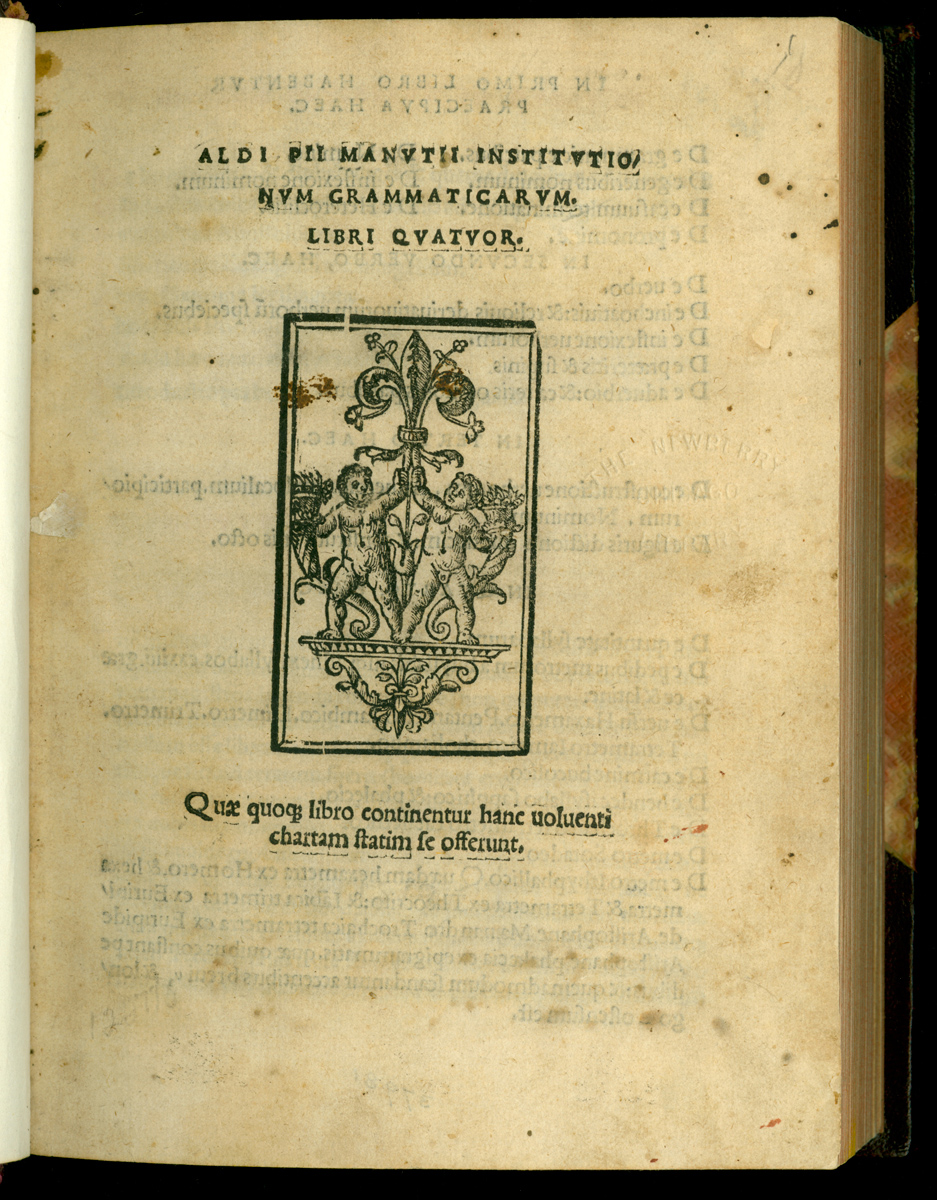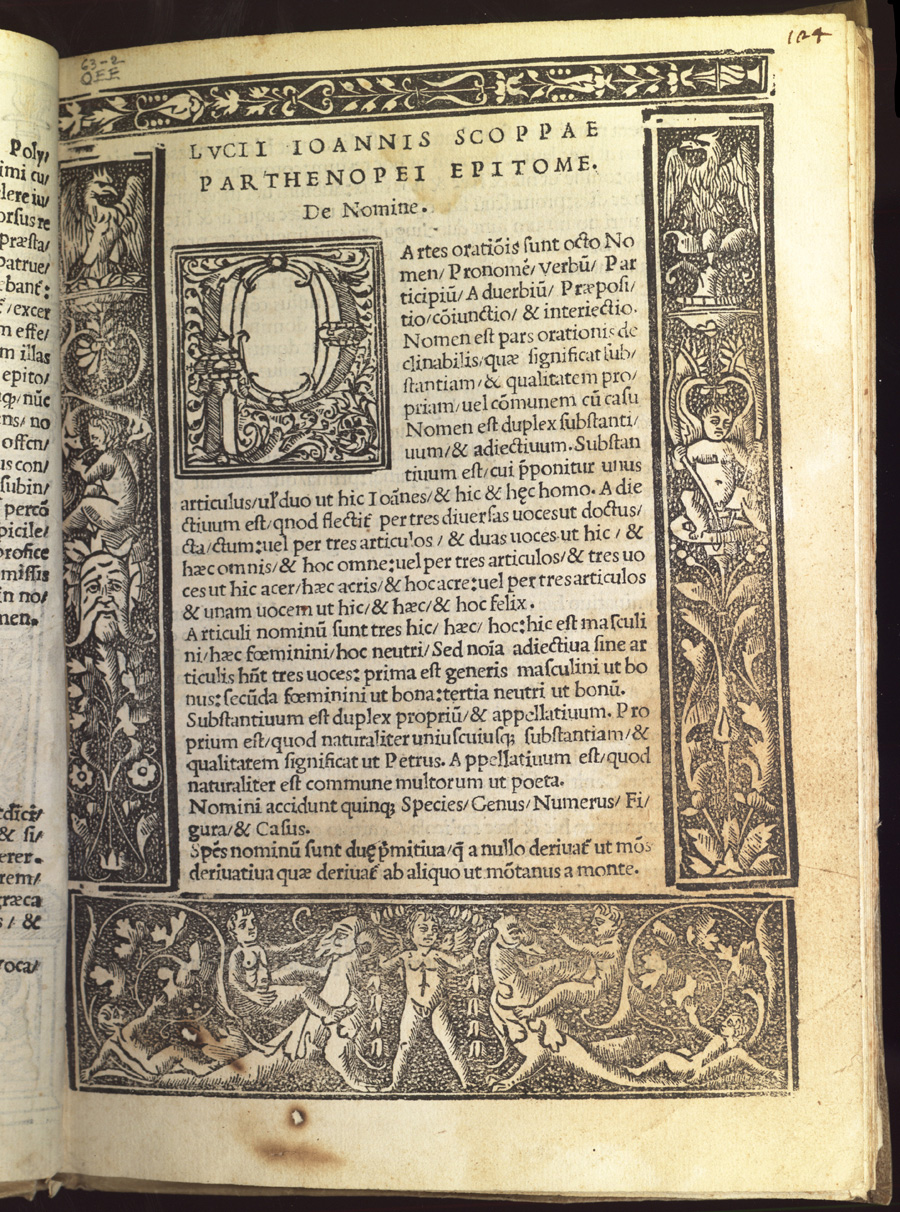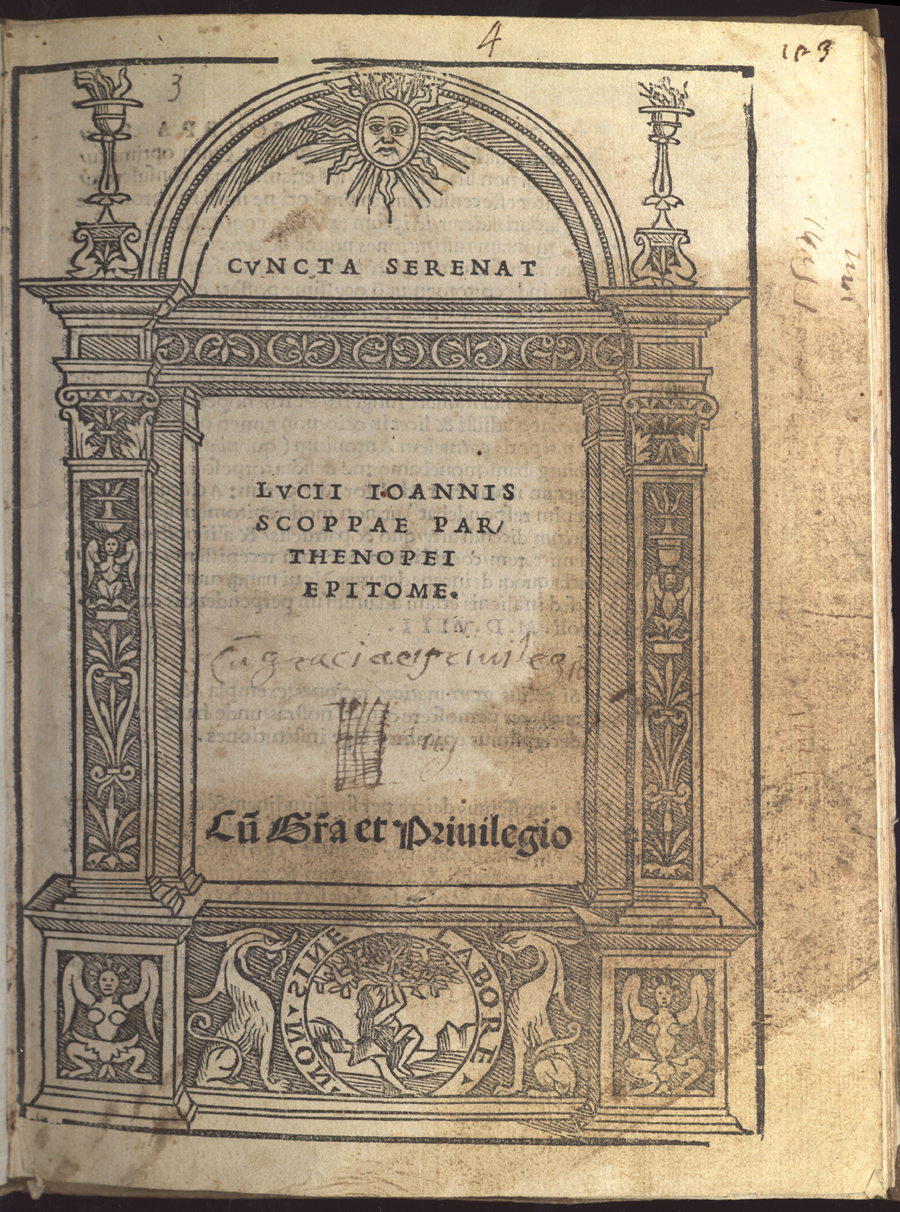2.12 Replacing the Donat
There were repeated attempts to displace the Donat in Italian schools from the early fifteenth century forward. Most early attempts foundered on the unmoving rocks of conservative educational practice. Guarino's brief prose grammar, a never-published verse grammar by Lorenzo Valla, and a series of short treatises by Pomponio Leto all intended to substitute for some of the material in the Donat, or at least to correct it at a very early stage. We have already seen this pattern in the case of Giovanni Sulpizio, who, like Valla and Leto, formed part of the coterie of Rome-based philologists who can be credited with a genuine humanist reform of grammar teaching. (74) Into the seventeenth century, printers were still designing pairs of textbooks to be sold together -- the Donat and Guarino's grammar or the Donat and some other local favorite. (75)
Giovanni Battista Cantalicio (ca. 1450-1514?) composed a successful short grammar which seems to have been intended to substitute entirely for the Donat. It appeared in over forty editions between 1493 and 1613, usually under a title that clearly defines its content and method, A Most Useful Compendium of all Latin Grammar and Metrical Art Divided into Rules. (76) Cantalicio relied on short lists of brief rules, expressly tailored to the limited memory of younger students. His work may be taken as a criticism of the lengthy and obscure rule-making of the Donat. Cantalicio's grammar was advanced in terms of layout, especially for the paradigms. This fact probably reflects his own ideas about type and design. Indeed, his preface is a letter of complaint about the work of its first printer (for a Foligno edition that does not seem to survive). The book's publishers reprinted this preface in every edition I have seen. It functioned primarily as an example of Cantalicio's elegant prose. But the printers may also have taken its sentiments to heart, for the layout of the book and even the style of ornament is remarkably consistent throughout its long life in print.

Aldo Manuzio also proposed to substitute for the Donat entirely, with a comprehensive Latin-language textbook composed from scratch. Aldo's grammar was a steady seller through the first third of the sixteenth century and continued to be reprinted thereafter. It was apparently more popular north of the Alps than in Italy. (77)
A more modest success, but entirely Italian, characterized the two grammar books of Lucio Giovanni Scoppa. These too represent a basic grammar course independent of the Donat. The Six Books of Introductory Grammar was completed in August 1508. Its preface assumes that it is self-contained and gives specific advice about teaching methods, especially for drilling paradigms.

Whether because the book was criticized as too long and detailed or just because Scoppa decided that his drilling models needed clarification for beginning students, he composed a shorter Epitome, which appeared as an appendix to the original work in November of the same year. Scoppa's double grammar is notable for its indexes, which allowed readers to access every Latin word used in a paradigm or as an example in the entire 500-page book. (78)

In 1517, the Neapolitan printer Antonio Frezza offered Scoppa's Introductory Grammar and the Epitome in separate but uniform editions.
.jpg)
By 1524, the Nicolini da Sabbio firm in Venice advertised that they had much improved and corrected Scoppa's grammar and that the Epitome was available as a separate. In a 1534 edition, the Epitome occupied a separate group of gatherings that could be detached for use with beginners. So it seems clear that Scoppa's Epitome could be used with elementary students while the larger grammar constituted its "teacher's edition" or a second, more advanced textbook. Although the Epitome survives as a separate much more rarely than the larger grammar, it is clear that many publishers after 1517 followed the Frezza/Nicolini pattern and that the smaller book was widely used as a first grammar, to substitute or supplement the Donat. (79)
.jpg)
The learned Basle printer Adam Petri tried a different strategy of substitution in the fifteen twenties, following the same anthologizing method that Giovanni Sulpizio had used. Petri stitched together a more or less complete basic course composed entirely of texts and extracts from classical sources. His choice for a first grammar was the Regulae of (Pseudo-)Rhemnius Palaemon. This brief text bore the name of a second-century grammarian, though it is now believed to have been written in the fourth century. It was discovered and assigned to Palaemon in the middle of the fifteenth century by Giovanni Gioviano Pontano (1426-1503). Scholars in the circle of Pomponio Leto, the so-called Accademia Romana, copied and studied it. (80)
Petri briefly introduced the text by situating it as an ancient one rediscovered in modern times. Moreover, he says, Palaemon beat Aelius Donatus at his own game:
This man [Palaemon] compacted the whole of grammar into so brief a package that even Donatus is more prolix than he, and some day he may come to have as enduring a name. Gioviano Pontano, a poet most eloquent in his own day, discovered this text. (81)
.jpg)
Notice that the role of the Donat as described here is to give a quick, exceedingly brief summary of grammar and to rehearse the paradigms, not to give a fuller structure to the subsequent course. This role, Petri says, is better played by Palaemon than by Donatus who in the common mind is synonymous with the brief introduction. (82)
The surviving Pseudo-Palaemon text, however, only presented grammatical information about nouns and pronouns. Petri therefore filled it out with a patchwork of grammatical doctrines by such late antique authors as Quintus Terentius Scaurus, Aelius Donatus, and Marius Victorinus. In a preface Petri described these authors briefly with their credentials in terms of ancient or modern opinions; as a minimum he gave a clear statement of the time at which they wrote. Thus, Petri managed to provide the basics of a full grammar course without ever having to employ the teachings of any suspiciously modern grammarian, and he also laid the foundation for his student public to understand the importance of ancient Latin usage as the creation of a specific historical period. The result was slightly repetitive, but no more so than seemed useful in the elementary classroom. It is a tour-de-force of antiquarian pastiche.
NOTES
- Open Bibliography
- (74) D'Amico 1983, 91-102; Rizzo 1996, 16-18; Rizzo and De Nonno 1997, 1597-1598; Black 2001, 137-139.
- (75) There are many examples. In addition to the Roman ones cited by Grendler 1989, 189, see: Donat and Guarino at Florence, in Sermartelli's editions of in 1597 and 1596 and at Modena, ca. 1590; Donat and Bossi at Milan, edd. of 1595, 1597, and 1611.
- (76) The opening words of the title vary from edition to edition, the most common being Summa perutilis, while others are called Compendium or Canones grammatices; this last appears in the earliest editons and was probably Cantalicio's own title. Editions I have seen are listed in the Bibliography. On Cantalicio, Sanford 1953, 267-269; Blasio 1992, 289-294; Trovato 1994, 28; Sánchez García 2007, 19-42. Morici 1905, 24 says Cantalicio's grammar was so popular that his name became a common word in Tuscan for "grammar book."'
- (77) Jensen 1998, 247-252, 272-273, and 279-283 describes some sixty editions in all, twenty eight of them Italian. The largest number appeared before 1530; significantly fewer came out between 1530 and 1556. Paolo Manuzio revived the work in 1558 for the Italian market after other Italian printers had largely left off publishing it; and he and his son Aldo Jr. published a dozen editions before 1575. Manuzio's 1558 edition was presumably that on offer at the Lanciano fair in 1559; see Marciani 1958, 434.
- (78) Fuiano 1971, 44-45; Sabbatino 1995, 76-86.
- (79) See Scoppa 1517a, 1517b, 1524, 1534,1566 and 1616 for this pattern. It was not by any means universal, however: Scoppa 1540 relegates the Epitome to an appendix in tiny type. Scoppa's textbooks remained influential, especially in the Kingdom of Naples, as evidenced by the inventories edited by Cosi 2006, 645-656. The same source lists a number of works by Scoppa's student, Luigi Antonio Sompano, called Sidicinus (d. 1557), as does another inventory edited by Ottone 2006, 694-699.
- (80) Pseudo Rhemnius ed. Rosellini 2001, xxxiv-xxxv, l-lv.
- (81) (Pseudo-)Rhemnius Palaemon 1523, 2: ... summam grammatices is perstrinxerit tanta brevitate, ut Donatus ei collatus prolixior, eoque fortasse nomine posthabendus uideri possit; quem nobis e` situ Iovianus Pontanus, sui temporis eloquentissimus poeta, protulit.
- (82) Pseudo-Rhemnius Palaemon 1523, 3.